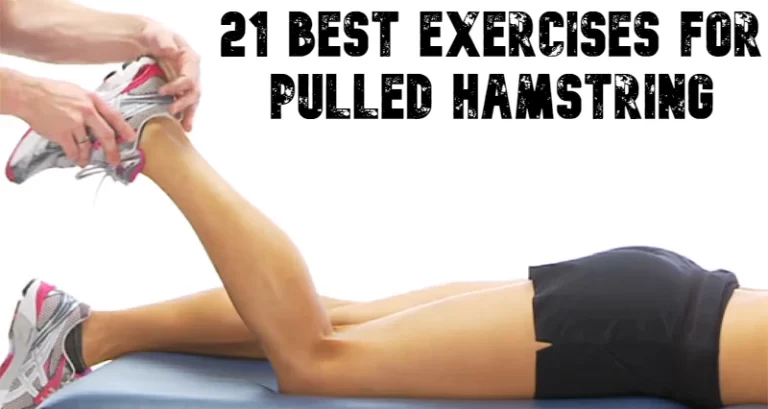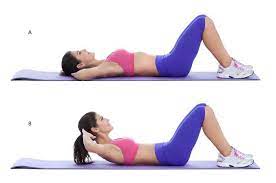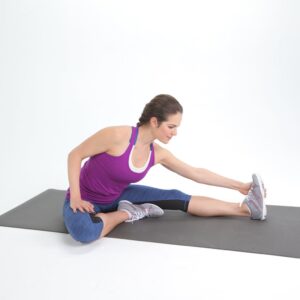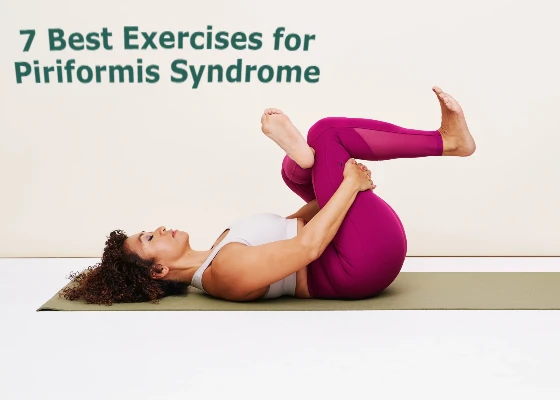Infraspinatus muscle stretching exercise
Infraspinatus stretch is an important exercise to increase the mobility of the shoulder area, has many health benefits as well as decreases the risk of rotator cuff injury. Regular exercise with other shoulder group muscles increases flexibility & the patient can use it as a warm exercise.
Table of Contents
What is infraspinatus stretching?
- An infraspinatus is involved in forming a Rotator Cuff of a shoulder joint. The infraspinatus muscle is situated deep in the Trapezius muscle, Deltoid, & even Latissimus dorsi. Moreover, infraspinatus muscles cover the larger part of the posterior surface of a Scapula.
- This muscle is located in the infraspinatus fossa of a scapula & reaches the greater tubercle of a humeral head.
- This gives stability to a humeral head in a glenohumeral joint & moves the shoulder joint into external rotation.
- Even though the patient cannot perfectly stretch an infraspinatus by itself, the patient has to stretch the rotator cuff muscles together with the importance of the infraspinatus.
What are the health benefits of doing infraspinatus stretches?
There are several common benefits the patient should know about:
- This improves range of motion(ROM) as well as internal rotation in the shoulders
- Provides stability in a shoulder joint
- Increased blood circulation around the shoulder joint
- Boost athletic presentation
- Gives flexibility as well as mobility to a shoulder joint
- This also stabilizes & moves the scapulae.
Anatomy of the infraspinatus muscle
- Description
A thick, triangular muscle; is one of the four muscles which comprise the Rotator Cuff of a shoulder. - Origin
An infraspinatus fossa of the scapula, with some fibers arising from an infraspinatus fascia that covers a muscle & separates it from Teres Major and Teres Minor as well. - Insertion
A posterior aspect of greater tuberosity of the humerus, & a capsule of the shoulder joint. - Nerve Supply
Suprascapular Nerve (C5 as well as C6) - Blood Supply
Suprascapular as well as circumflex scapular arteries. - Function
This provides a primary muscle force for the external rotation of a shoulder.
Along with the rest of the Rotator Cuff muscles, this provides stability to a shoulder complex. - Action
The infraspinatus is a main external rotator of a shoulder joint.
This assists in producing shoulder extension.
With an arm fixed, this abducts the inferior angle of a scapula.
What are the types of infraspinatus stretching?
There are some types given below that stretch the Infraspinatus muscle:
- Seated Bent-Over Stretch
- Pendulum stretch
- External rotation stretch
- Passive external rotation stretch
- Broom-Stick-Assisted Stretch
- Cross-Arm Stretch
Seated Bent-Over Stretch
How to perform the stretch: First of all, the physical therapist tells the patient to take a sitting position on the edge of the chair.
Now place the palms behind a lower part of the back. After that, the elbow should be pointing outward. Next, slowly breathe out as you slowly bend forward as much as the patient can. Hold this stretch for 5-6 seconds in one repetition. Repeat this 2-3 times in one session. Do three sessions per day.
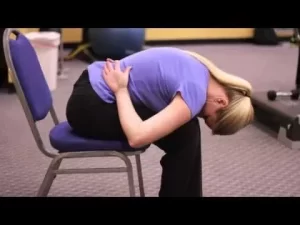
Pendulum stretch
How to perform the stretch: First of all, the physiotherapist should instruct the patient to stand beside the table.
Put the right hand on the table with the elbow is straight, so the left arm hanging by the side.
Now bend forward by the waist. After that, swing the left hand as well as take support from the right hand.
Slowly start swinging by the left hand, forward as well as backward, then sideways.
Make a small circle by swinging. Perform 10 repetitons on each side in one session. Do three sessions per day.

External rotation stretch
How to perform the stretch: To begin with, the physical therapist tells the patient to lie on the left side & rest the head on the left arm.
Flex an arm the patient is not lying at 90 degrees so the right elbow is in the air, the hand is on the floor, and the right arm is running across the abdomen.
Move the right elbow to the side & slowly rotate an arm. Rotate until 90 degrees bend, so the hand is in the air.
Slowly rotate a right arm back down.
Perform ten repetitions in one session. Do three sessions per day. Repeat on the left side.

Passive external rotation stretch
How to perform this stretch: To embark, the patient needs a light stick or a dowel rod.
Loosely grasp a stick on each end. Keep an elbow of the left arm against the body.
Use a right arm to slowly push the stick horizontally.
So, the left elbow moves against the side, & the left arm is bent 90 degrees, perpendicular to the body.
When the patient felt a stretch, hold for 30 seconds.
Now release the stretch for 30 seconds.
Repeat up to 3-4 times & do it on the right side.
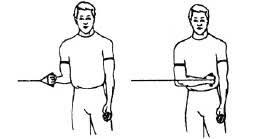
Broom-Stick-Assisted Stretch
How to do the stretch: The patient needs a prop, namely a broomstick. Stand upright.
Grab the stick with the left hand & lift it over the head, such as a flag.
Bend an elbow of the left arm & allow the stick to point down toward the ground behind you to the right.
With the right hand, reach behind you to grasp an opposite end of a stick.
Position the right elbow so it is at shoulder height.
With the left hand, press a stick against the right shoulder, internally rotating the shoulder.
Hold the stretch for 30 seconds. Repeat on the opposite side too.
Cross-Arm Stretch
How to perform the stretch: The cross-arm stretch draws the infraspinatus horizontally & slightly upward.
The patient can perform this anywhere in standing, sitting, or even supine position.
Bring the left arm across the chest.
Now grasp the left elbow with the right hand.
Gently push the left arm towards you.
Hold it 20-30 seconds & release.
Perform it on the right side as well. Repeat 2-3 times.

Common mistakes are done during performing the stretch
There are many mistakes that the patient should avoid while stretching:
- Doing held stretches before doing any exercise that makes the muscle strained or even injured.
- Individuals think that you have to feel pain while a stretch is to take advantage of a stretch. This is not true, so do not make mistakes. It only damages the muscles or other tissues.
- Several people think that the patient does not have to hold a stretch to take benefits. But, it is not true, the patient has to hold it as long as recommended by the therapist.
- Never hold the breathing during the stretch.
- Assure to use the proper or while the technique of stretching. Consult a physical therapist to know about the matter.
- Never do bouncing while a stretch which causes muscle damage.
- If the patient has prior injuries in the muscle then never do stretching on the area which causes further injury to a muscle.
FAQ
How does the patient release a tight infraspinatus?
Keep an elbow of the affected arm against the body. Use the other arm to gently push a stick horizontally so that an affected elbow is against the side as well as the affected arm is bent 90 degrees, perpendicular to the body. Hold for 30 seconds. Relax for 30 seconds.
Can the patient massage the infraspinatus?
If the patient wants to massage the left infraspinatus, take a ball in the right hand. For massaging a right side, use the left arm. The patient’s back is facing a wall. Place a ball on the infraspinatus & then press it against a wall.
What does the infraspinatus tear feel like?
Infraspinatus tendon tears frequently happen in overhead athletes, as a result of overuse injury, or chronic shoulder instability. The main complaints are pain during sleeping, weakness in an affected arm, as well as inability to move the arm in certain movements.
How long does it take for infraspinatus to heal?
Recovery from the small tear or even tendinitis may take between 2 and 4 weeks, or sometimes a few months. Younger individuals are more likely to heal completely from rotator cuff injuries. 90% of people under the age of 40 with complete rotator cuff tears are often able to return to the previous level of function.
Can the infraspinatus tendon tear heal itself?
Although most tears may not heal on their own, the patient can often achieve good function without surgery. If, however, the patient is active or uses the arm for overhead work or sports, surgery is most often recommended owing to many tears that will not heal without surgery.
How should the patient sleep with infraspinatus pain?
Instead, try sleeping on the non-painful side with the pillow underneath the painful shoulder’s armpit, or try gently hugging a pillow. It will position the shoulder in a neutral position taking stress off rotator cuff tendons making it significantly less painful & easier to fall asleep.
How does the patient heal the infraspinatus muscle?
Rest: Take a break from sports or even activities. Ice it: Put some ice into the towel & hold it over the shoulder for 15 to 20 minutes. Stretching exercises: When the symptoms increase, the patient may begin some light exercises as well as stretches to strengthen the rotator cuff as well as muscles.

